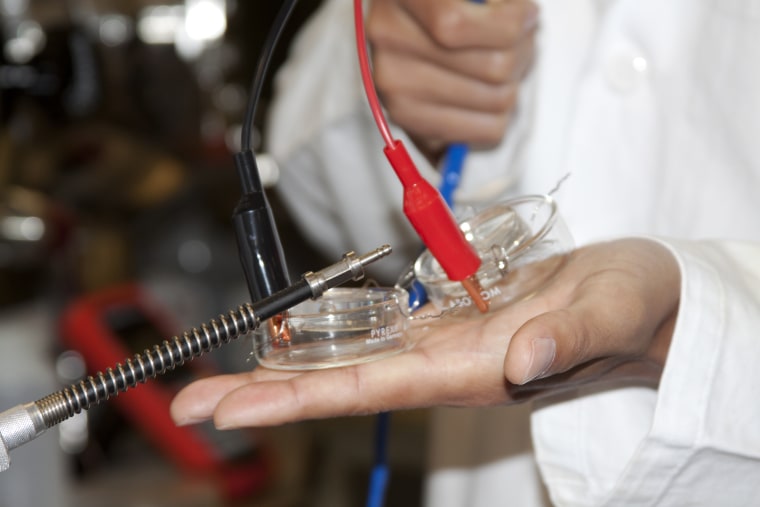Imagine sitting around the house watching the tube with a case of the munchies as images of a steamy, cheesy, pepperoni pizza appear on the screen and its scent fills the air. When a phone number flashes for home delivery, would you call?
It's a question marketing departments may want to seriously consider if a technology that incorporates an odor-generating device into televisions ever moves from the lab to the living room.
For now, the concept of smell-o-vision remains firmly rooted in the lab, but researchers at the University of California, San Diego, are reporting that they've successfully demonstrated the feasibility of generating thousands of odors, at will, in a device compact enough to fit on the back of a TV or phone.
The device, arranged on an X-Y axis, consists of thousands of controllers — scents in aqueous solution such as ammonia which emit an odorous gas when heated through a thin metal wire. As heat and odor pressure build, a tiny compressed hole in the elastomer is opened, releasing the odor.
Using the X-Y matrix system, the researchers say, enables them the produce 10,000 different odors with 100 controllers on each axis.
"Instantaneously generated fragrances or odors would match the scene shown on a TV or cell phone, and that's the idea," Sungho Jin, a mechanical and aerospace engineer at the UCSD Jacobs School of Engineering, said in a news release.
The researchers built the proof-of-concept device in collaboration with Samsung Advanced Institute of Technology in Korea. A paper on the technology was published online June 14 in the journal Angewandte Chemie.
The system was tested with two commercially available perfumes, "Live by Jennifer Lopez," and "Passion by Elizabeth Taylor." In both cases, a human tester was able to smell and distinguish the scents within 12 inches of the test chamber.
Whether or not audiences and consumers will respond to the technology are questions for another phase of the study, according to the UCSD news release. For now the question is whether it's doable. The research says yes, it is.
So, you, the consumer who likes to sit around the house and watch the tube, do you really want to smell it too? Feel free to weigh in with your vote or comment below.
More on the science and tech of smell:
- Smell that? Automated scents hit the cineplex
- This cookie's taste is all in your head
- What does an Egyptian pharaoh smell like?
- Scientists figure out origins of sea smell
- Why does your smartphone smell like Jelly Belly?
John Roach is a contributing writer for msnbc.com. Connect with the Cosmic Log community by hitting the "like" button on the Cosmic Log Facebook page or following msnbc.com's science editor, Alan Boyle, on Twitter (@b0yle).
